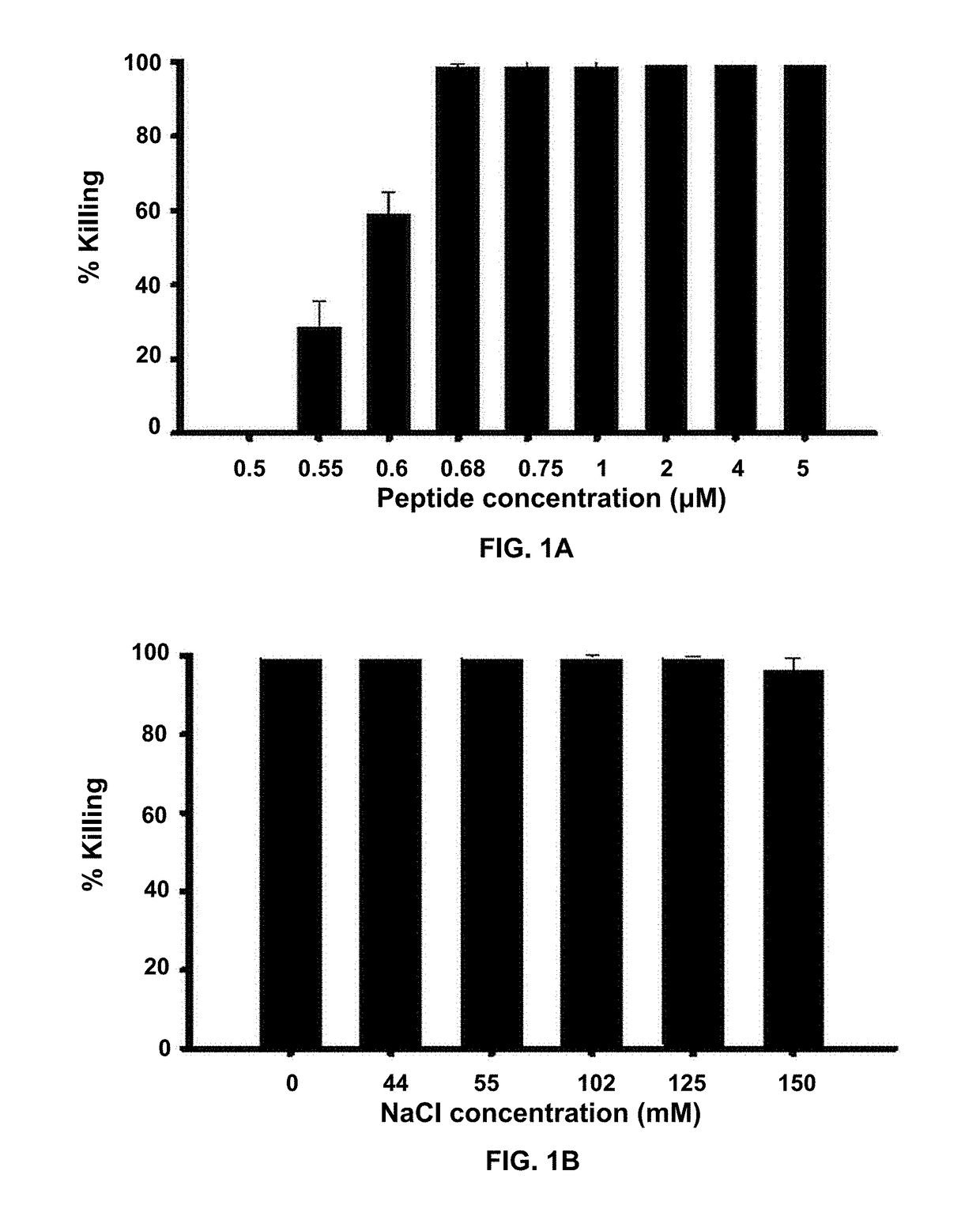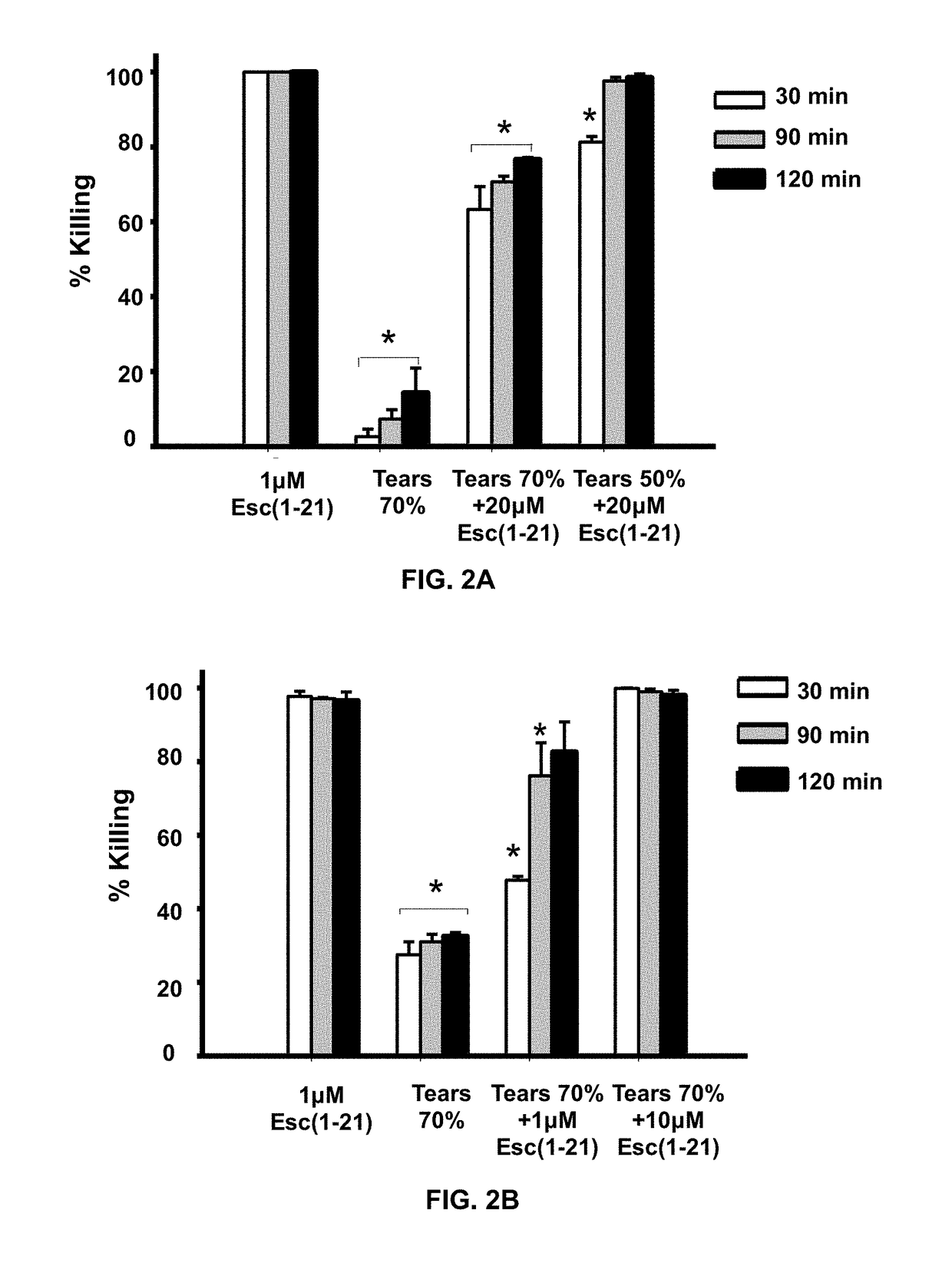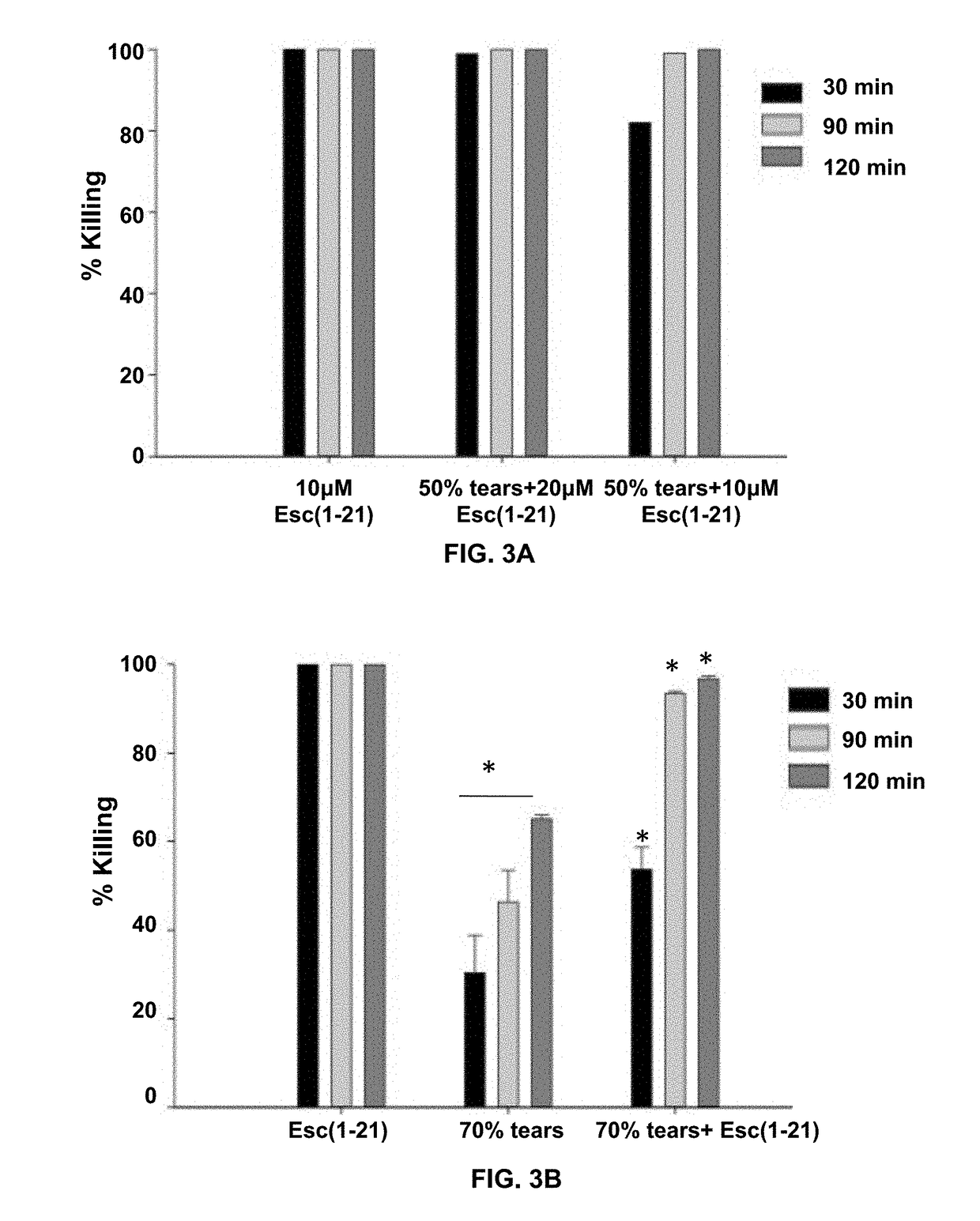Esculentin 1a Derivatives and Uses Thereof
- Summary
- Abstract
- Description
- Claims
- Application Information
AI Technical Summary
Benefits of technology
Problems solved by technology
Method used
Image
Examples
example 1
Minimum Inhibitory Concentration Assays
[0061]To determine the minimum inhibitory concentration (MIC) of Esc(1-21) that causes total inhibition of microbial growth against Pseudomonas aeruginosa and Staphylococcal strains, the following experiment (using P. aeruginosa ATCC 19660 as an example) was performed. MIC was determined using the 96 well micro-plate dilution assay. The test was performed in triplicate wells and Esc-1a(1-21)NH2 was serially diluted to give concentrations of 0.125 μM to 64 μM.
[0062]Day 1: Picked a colony from a P.aeruginosa ATCC19660 streak plate, inoculated in to nutrient broth and incubated overnight at 37° C. with shaking (250 rpm)
[0063]Day 2 Steps: Removed 100 μl of the bacterial suspension and inoculated into 50 ml of fresh broth. Incubated for 2.5 hours with vigorous shaking (250 rpm) at 37° C. to achieve mid-log phase growth. Centrifuged the 50 ml culture at 3100 g for 10 minutes; discarded supernatant and resuspended pellet in 2 ml Muller-Hinton broth (M...
example 2
Tear and Salt Effects on Esc-1a(1-21)NH2 Activity
[0067]Owing to their mode of action, the antimicrobial activity of antimicrobial peptides may be reduced in the presence of salt. To demonstrate anti-Pseudomonal activity of Esc-1a(1-21)NH2 in the presence of salt (NaCl), the following experiment was performed. In FIG. 1A 2×106 CFU / ml P. aeruginosa (ATCC 27853) were incubated with varying concentrations of Esc-1a(1-21)NH2 in the presence of 150 mM NaCl at 37° C. for 20 min then aliquots plated and counted (n=3). In FIG. 1B, 2×106 CFU / ml P. aeruginosa (ATCC 27853) were incubated with 1 μM Esc-1a(1-21)NH2 in the presence of increasing amounts of NaCl at 37° C. for 20 minutes then aliquots plated and counted (n=3). Concentrations of Esc-1a(1-21)NH2 at 0.68 μM and above fully retained activity in 150 mM NaCl, the physiological salt concentration at the ocular surface.
[0068]Anti-Pseudomonal Activity of Esc-1a(1-21)NH2 in the Presence of Basal Human Tears
[0069]In addition to salt, mucins in...
example 3
MTT Cytotoxicity Assays
[0073]To determine the toxicity of Esc-1a(1-21)NH2 to immortalized human telomerase corneal epithelial cells, the following experiment was performed. The MTT (3-(4,5-Dimethylthiazole-2-yl)-2,5-diphenyltetrazolium bromide) assay measures the activity of enzymes that reduce the tetrazolium blue dye to a formazan salt. Mitochondrial reductase enzymes will reduce MTT to formazan, which can be visualized by colorimetric reaction the absorbance of which can be quantified.
[0074]MTT assay was performed on human telomerase corneal epithelial cells treated with different concentrations of the peptide for 24 hrs. The test was performed in triplicate or quadruplicate wells with concentrations of the peptide of up to 100 μM using the following protocol. On day 1, plated the telomerase epithelial cells at 10,000 cells / well in a 96 well plate. Incubated the plate at 37° C. for 48 hrs to allow the cells to attach to the plate and spread. On day 2, incubated the cells in serum...
PUM
| Property | Measurement | Unit |
|---|---|---|
| Temperature | aaaaa | aaaaa |
| Temperature | aaaaa | aaaaa |
| Fraction | aaaaa | aaaaa |
Abstract
Description
Claims
Application Information
 Login to View More
Login to View More - R&D
- Intellectual Property
- Life Sciences
- Materials
- Tech Scout
- Unparalleled Data Quality
- Higher Quality Content
- 60% Fewer Hallucinations
Browse by: Latest US Patents, China's latest patents, Technical Efficacy Thesaurus, Application Domain, Technology Topic, Popular Technical Reports.
© 2025 PatSnap. All rights reserved.Legal|Privacy policy|Modern Slavery Act Transparency Statement|Sitemap|About US| Contact US: help@patsnap.com



